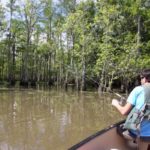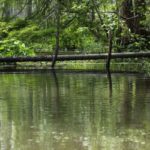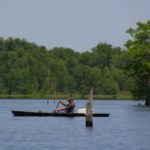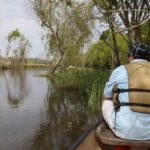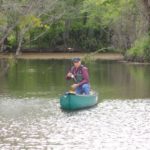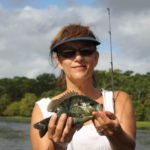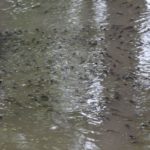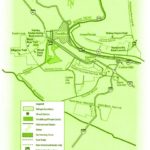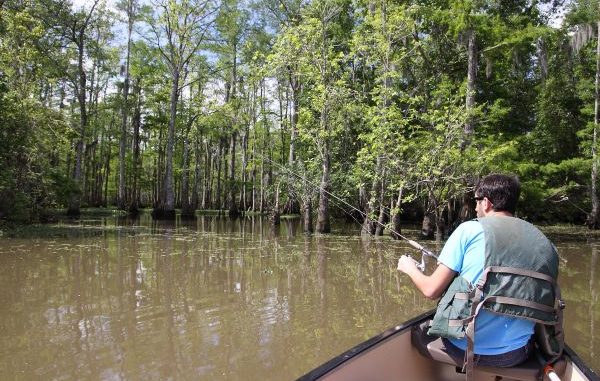
Bayou Teche is one of the most-peaceful settings in South Louisiana, and offers some great padding opportunities. And it’s loaded with fish just waiting to interrupt your peaceful day.
The balsawood float sailed through the air like a bullet with purpose to the predetermined target making a sploosh as it hit the water.
It seemed odd echoing against the cypress trees that surrounded the dead-end canal location.
Before the little Doppler rings created by the splash could drift away, the float started moving ever so slowly. Mesmerized, I watched it sink below the surface and instinctively twitched the ultra-light rod tip, setting the hook.
It doesn’t take much effort to hook bream that are hungry. And using light tackle is our human nature, making sport of things that come easy.
Yet, something else that made the whole affair so easy, whimsical and peaceful was the where and how. I was fishing on Bayou Teche National Wildlife Refuge in St. Mary Parish out of canoe, with not an outboard motor within earshot.
And there is no better method or place to do what I call the “refuge-relax” than on this particular refuge, where only the fish interrupt the tranquility of the peaceful surroundings.
But really, places like Bayou Teche NWR offer excellent fishing opportunities to the general public and the portability of canoes and kayaks make these tucked-away locations worth checking out.
You literally find yourself alone in areas teeming with fish.
Bayou Teche NWR is a 9,028-acre bottomland hardwood area consisting mainly of cypress and gum trees laced with canals and oil and gas well locations. The surrounding waters of Yellow Bayou, and the Franklin and Hanson canals make the refuge accessible for canoe and kayakers. And, though outboard motorized crafts are allowed on the refuge, there are designated waterways where they’re not.
Jeanerette resident Donavon Garcia is an avid canoeist and a tour guide for people from all around the country. Garcia regularly chooses Bayou Teche NWR as his destination of choice.
Moreover, he is extremely familiar with the refuge and said anglers using both motorized and non-motorized crafts catch their share of fish in this overlooked part of St. Mary Parish.
“Bayou Teche refuge is a great place,” said Garcia. ” You can paddle down these little canals, and in the next few minutes you’re in hardwood cypress swamp and three to five miles later you’re in coastal marsh. It transitions very quickly in a short area.
“There are a lot of people catching fish in there, and many of them aren’t necessarily canoeing or kayaking — they’re in motorboats catching a lot of bream.
“One of the hot spots is the Quintana oil-field canal area, which is part of Bayou Teche National Wildlife Refuge. It’s a hotspot for bass, bream and goggle-eyes — all of those fish are in there. I’ve fished that area on the refuge, and I mean you throw it in the water and count to 10 and you’ve got a fish.
“But, you’ve got to fish it at the right time.”
According to locals, the right time to fish Bayou Teche NWR is typically the spring and fall. Additionally, because some of Bayou Teche NWR is tidal, quite often anglers have to adjust to the conditions.
“The water can’t be too high,” Garcia said. “All of the water backs up into the swamp. But, when it starts dropping it comes out of the wetlands and little canals. And all of those oil-field location canals are real hotspots for fishing.”
Bayou Teche NWR is made up of six separate units: the Franklin Unit, Centerville Unit, Garden City Unit, North Bend East Unit, West Bend Unit and Bayou Sale Unit.
The largest unit is the Franklin Unit, where non-motorized boats only are allowed.
Quintana is a 10-mile canoe trip from the Franklin landing near Highway 90, but much less from the Garden City Unit pump station located off of Alice C Road via Highway 317.
Canoes can be launched right off the levee in that location, where anglers can paddle Yellow Bayou toward the Intracoastal Canal into the Quintana field.
What’s interesting is I’ve never seen a motorized craft when canoeing into the heart of the Garden City Unit. What’s more, if an angler decided to launch his watercraft at the Cabot Landing off of Highway 317 and make the run by outboard to the Garden City Unit Quintana oil-field canals, a canoeist would be fishing a good half hour by the time the outboard angler arrived there.
In other words it’s a short paddle to this part of the NWR.
“The Quintana area of the refuge is really good, in part because the water is really good back there,” Garcia said. “And the reason why it’s so good — and I’m not a biologist — is we have the Wax Lake outlet and the Atchafalaya River that’s pushing water out into the Gulf of Mexico. But, some of those outlets along the coast are silting up and getting shallow. Because of that, the water is going down the Intracoastal and flowing westward.
“It actually has a current all the time. Sometimes it’s as much as 3 mph. The water from the Gulf comes in the marsh, and that is your breeding grounds for shrimp, crabs, small fish and everything else — and nutrients. The water goes in and out in the exchange and builds healthy marshes.”
Garcia said another good location for canoe and kayak anglers is the barrow pits in the Centerville Unit. Fishermen can put over at the Verdunville boat launch north of Centerville.
“It’s a dead waterway because it was cut off when they built the levee,” he said. “It’s a pretty tupelo and cypress area back there, and if it’s not clogged with grass there is excellent fishing.
“The bream and goggle-eye fishing is really good in the spring, and exceptionally good in the fall and wintertime around the squirrel and deer seasons.”
The Franklin Unit is made up of old logging canals designated as the Black Bear Trail, the Alligator Trail and the Wood Duck Trail. Garcia said there are fish to be caught in this area, as well, and if you have good water you’re going to catch fish in this part of the refuge.
A lot of people fish this particular unit.
But later in the fall, because of the abundance of trees, leaves that fall and decompose result in low oxygen where fishing becomes poor.
Unlike fishing from an outboard or bass boat, canoe and kayak fishing on the national wildlife refuge isn’t about being in a hurry.
Moreover, it isn’t so much about a particular style of fishing, either. Some canoe and kayak anglers simply use their standard rod and reel, whether it be a spinning reel, bait cast or little closed-face Zebco.
As long as it casts they’re happy.
My favorite fishing rig for refuge bream is a 12-foot crappie pole that lets me finesse-fish the cypress-lined canal locations.
I’ll use a balsawood float suspended 30 to 36 inches from a perch hook with a little splitshot 12-inches above the hook.
Baited with worm or cricket, the combination is deadly.
Another preferred rig is a small Shakespeare ultra light that I use. It takes up little space in the canoe and is easier to cast when two people are in my 15-foot, 9-inch boat.
It doesn’t take a couple of canoeists — seasoned or novice — long to paddle a few miles into Bayou Teche NWR to catch a mess of fish for supper.
The problem comes when the fish interrupt your fishing. After all, the whole idea is to do the “refuge-relax” and just enjoy the peace and tranquility.
